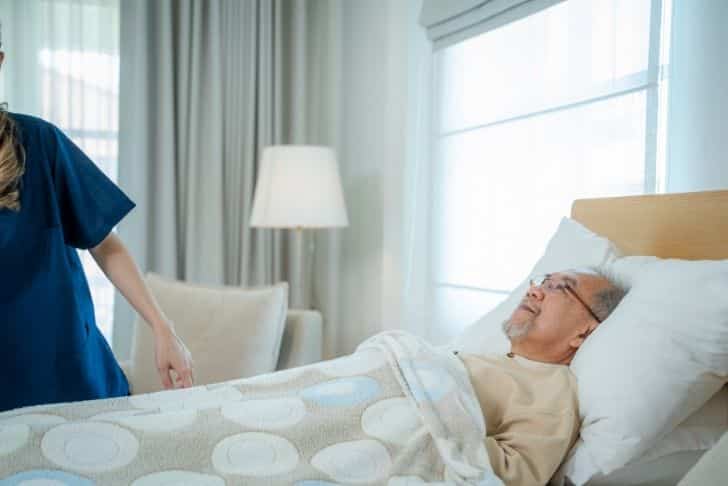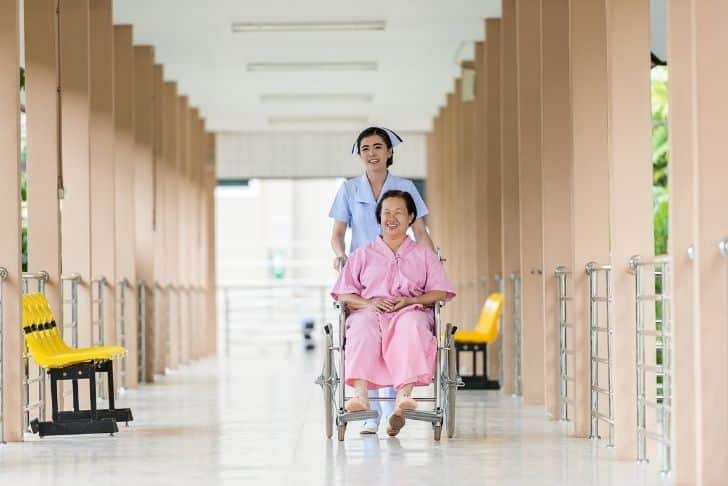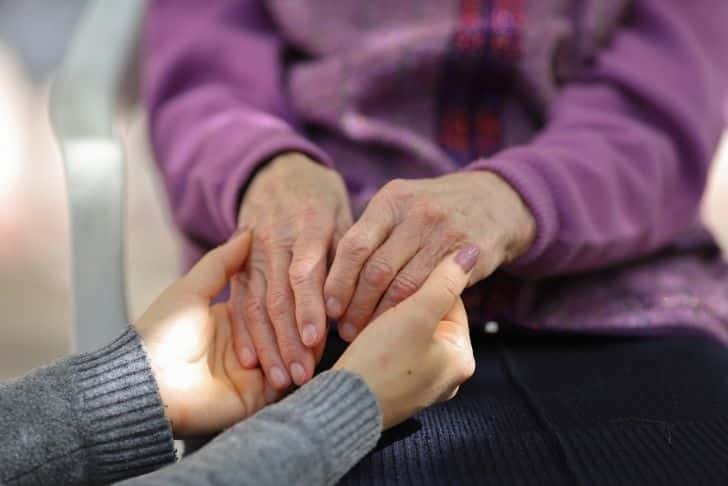In this informative article, “Understanding Sarcopenia: The Age-Related Loss of Muscle Mass that Increases Fall Risk,” you’ll learn about the age-related muscle loss known as Sarcopenia, a condition that often escalates the risks associated with falling among older adults. You’ll discover the statistics, causes, and impacts of falls, such as serious health issues, long-term disabilities, and a heightened tendency to abstain from certain activities out of fear.
The article will then guide you through practical and essential strategies to prevent falls, covering areas such as physical activity, home safety improvements, vision and hearing checks, and understanding your medications. Furthermore, it’ll shed light on how to handle falls when they occur, preventive steps to maintain healthy bones and body weight, and the need for regular doctor check-ins. Finally, it’ll touch on related conditions like osteoporosis and convey the urgency of minimizing the possibility of serious injuries and hospitalization due to falls among older adults.

Understanding Sarcopenia
Defining Sarcopenia
At the outset, let’s define sarcopenia. It’s essentially a condition characterized by the age-related loss of muscle mass. This oft-overlooked problem is more than just an inconvenience; it’s a very real detriment to your quality of life and overall health.
Causes of Sarcopenia
The causes of sarcopenia are multifarious. As we age, we typically become less physically active, which contributes to muscle loss. Additionally, hormonal changes, poor nutrition, and certain chronic diseases can lead to sarcopenia. It’s crucial to understand these causes so that you can take the proper steps to prevent or manage this condition.
Symptoms of Sarcopenia
Symptoms of sarcopenia primarily include muscle weakness and fatigue, but they may also involve difficulty moving, diminished strength, and an inability to perform certain physical tasks you were once able to do. Understanding these symptoms can alert you to potential health issues and prompt you to seek proper care.
Diagnosing Sarcopenia
Diagnosing sarcopenia can be quite involved. Medical professionals will look at your medical history, conduct a physical examination, and utilize imaging tests like X-Rays or MRIs to detect muscle loss. The diagnosis process is crucial to determine the best methods of care and management for your condition.
Sarcopenia and the Increased Risk of Falls
Reason why Sarcopenia leads to falls
One major consequence of sarcopenia is an increased risk of falls. This happens because muscle mass and strength are essential for maintaining your balance and coordination. When these elements are compromised, falling becomes a higher probability.
Study of fall rates amongst individuals with Sarcopenia
Several studies show an increase in fall rates among individuals with sarcopenia. This association is born from muscle weakness, decreased reaction times, and overall frailty, all of which inflates the risk. Understanding these studies can shed light on the importance of preventing and treating sarcopenia.
Serious injuries resulted from falls due to Sarcopenia
Falls induced by sarcopenia pose the risk of causing serious injuries. These can include fractures or broken bones – issues that become increasingly detrimental as we age and our healing abilities slow. Treating sarcopenia can help minimize this risk.
Factors Contributing to Falls Among Older Adults
Role of declining physical abilities
Declining physical abilities, such as poor eyesight, hearing, or reduced reflexes, can significantly contribute to falls in older adults. Awareness of these factors can be instrumental in developing a robust preventative strategy.
Impact of certain health conditions
Certain health conditions like diabetes, heart disease, and dementia can increase the risk of falls. Each of these conditions can inhibit your ability to navigate your environment safely, underscoring the importance of careful management.
Effect of certain medications
Certain medications can also put you at an increased risk of falls. Some may cause drowsiness, dizziness, or other side effects that affect balance and coordination. Regular consultation with your healthcare provider about your medications and their side effects can reduce your fall risk.
Unsafe environmental hazards
Unsafe environmental hazards like cluttered floors, poor lighting, and slippery surfaces can precipitate falls in older adults. Awareness and management of these hazards are critical to enhancing safety in your living environment.
Preventing Falls in Older Adults
Importance of staying physically active
Staying physically active is a key factor in preventing falls among older adults. Exercise not only builds strength and improves balance, but it also enhances your overall health.
Practical tips to fall-proof home
Fall-proofing a home can be as simple as eliminating clutter, enhancing lighting, and installing grab bars. Taking these steps can help you avoid most common fall hazards.
Necessity of regular eyes and hearing tests
Regular eyes and hearing tests are vital in maintaining good health and safety. They ensure your senses, which guide you through your environment, are functioning optimally.
Understanding medication side effects and interventions
Understanding medication side effects and potential interventions can mitigate risks associated with certain medications. Regular discussions with your healthcare professional can facilitate this understanding.

Managing Fear of Falling
Psychological implications of fall fear
Fear of falling can significantly impact your psychological health. It can lead to isolation, decreased physical activity, and reduced quality of life. Recognizing these implications can help you seek the right assistance.
Societal role in promoting fall prevention
Society plays a key role in promoting fall prevention. It provides resources, advocates for research, and disseminates information. Taking advantage of these societal contributions can significantly enhance your safety.
Approaches to build confidence in mobility
Therapy, support groups, and physical activity are just a few approaches to building confidence in mobility. Confidence reduces fear, improving mental health, and promoting an active lifestyle.
Importance of Nutrition in Fall Prevention
Role of calcium and vitamin D
Calcium and vitamin D play a crucial role in maintaining strong, healthy bones. Ensuring your diet is rich in these nutrients can help prevent falls and their associated injuries.
Significance of maintaining healthy weight
Maintaining a healthy weight is essential for overall health and fall prevention. Being underweight can lead to bone loss and fractures, while obesity can lead to instability and increased fall risk.
Impact of smoking and alcohol on bone health
Smoking and excessive alcohol consumption can severely damage bone health, increasing your risk of falls and fractures. Limiting or avoiding these habits can greatly improve your bone quality and reduce fall risk.

Understanding Osteoporosis in Relation to Falls
Defining Osteoporosis
Osteoporosis is a disease that thins and weakens the bones, making them more susceptible to breaks. Like sarcopenia, it is a common condition among older adults and significantly increases the risk of falls.
Correlation between Osteoporosis and falls
There’s a strong correlation between osteoporosis and falls. Brittle bones, a characteristic of osteoporosis, mean even minor falls can cause significant injuries, including fractures.
Preventing Osteoporosis
Preventing osteoporosis involves good nutrition, regular physical activity, and regular check-ups. Early recognition of the disease can lead to treatments that slow its progress, reducing the risk of falls and fractures.
When a Fall Occurs: Steps to Take
Importance of staying calm
If a fall does occur, it’s important to stay calm. This allows you to assess your situation accurately and take the most appropriate measures.
Injury assessment and first aid
Following a fall, injury assessment and first aid are paramount. This involves checking for injuries, managing minor wounds, and seeking help when necessary.
Proper techniques for getting up
If you are uninjured and feel capable, knowing the proper technique for getting up is important. This involves rolling to your side, getting on to your knees, and using a sturdy piece of furniture for support.
When to seek medical help
Even if no obvious injuries are apparent, you should consider seeking medical help following a fall. After-effects like aches, pains, or confusion could be signs of more serious issues.
Hospitalization Due to Falls
Common causes for hospital visits
Falls are a common cause for emergency room visits among older adults. Common problems include fractures, sprains, cuts, and head injuries.
Impact of falls on hospital stay
The impact of falls extends beyond injury. Hospital stays, surgeries, and rehabilitation can significantly disrupt your life, highlighting the importance of preventing falls.
Long-term effects post hospitalization
Falls can also have long-term effects after hospitalization. This might entail ongoing medical treatments, mobility issues, or changes to your living arrangements.
Proactive Measures for Fall Prevention
Regular doctor consultations
Regular doctor consultations enhance your overall health and fall prevention. Doctors can help identify risks, manage medications, and recommend personalized strategies to prevent falls.
Reporting falls without injury
It’s important to report all falls—including those without obvious injury—to your healthcare provider. This allows them to monitor your health and possibly adjust your fall prevention activities.
The role of assistive devices in preventing falls
Assistive devices like canes and walkers can be invaluable in preventing falls. They provide added support and stability, reducing your risk of falls and injuries.
Proper footwear and avoiding risky environments
Proper-fitting, non-slip footwear, and avoiding risky environments—like wet or slippery surfaces—can go a long way in preventing falls. Make sure your shoes provide good traction, and your environment is safe for navigation. In sum, falling can be injurious—even devastating—for older adults, but such events are often preventable. By understanding and combatting risk factors, you can enhance your safety, health, and overall well-being. Never underestimate the power of prevention!
